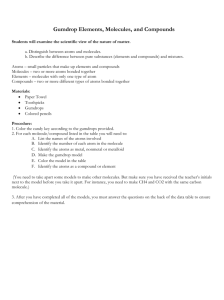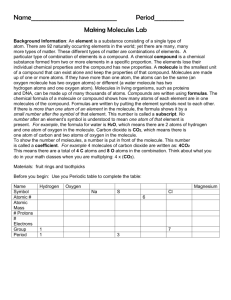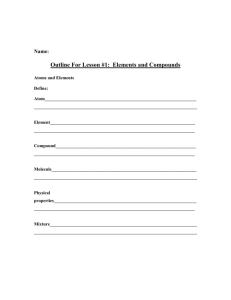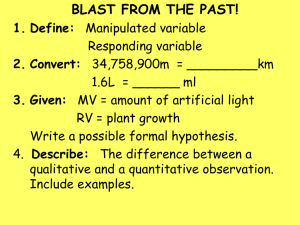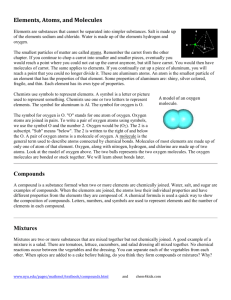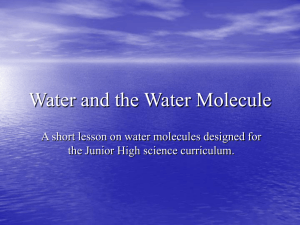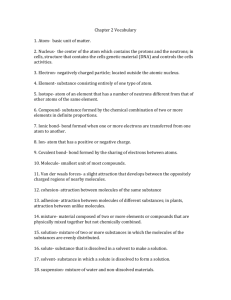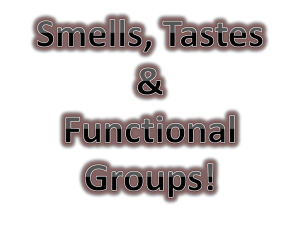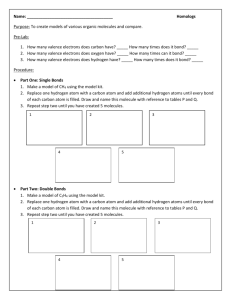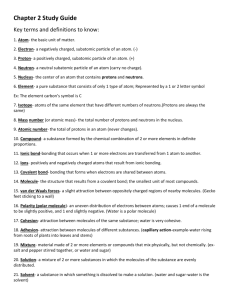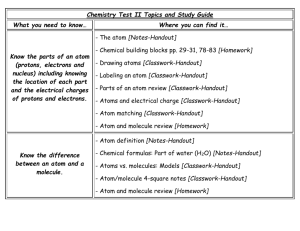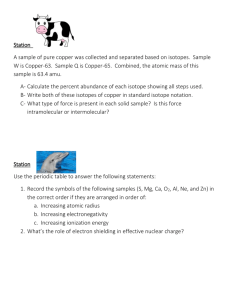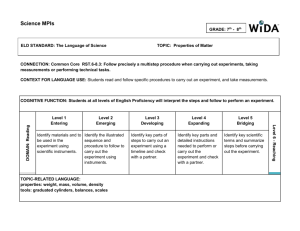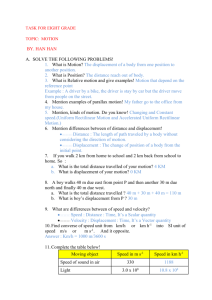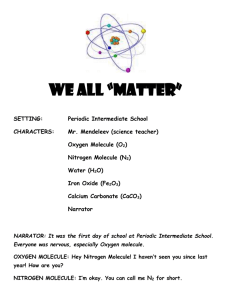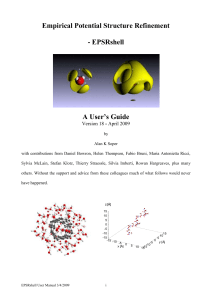Atoms, Elements, Molecules, and Compounds Lab
advertisement
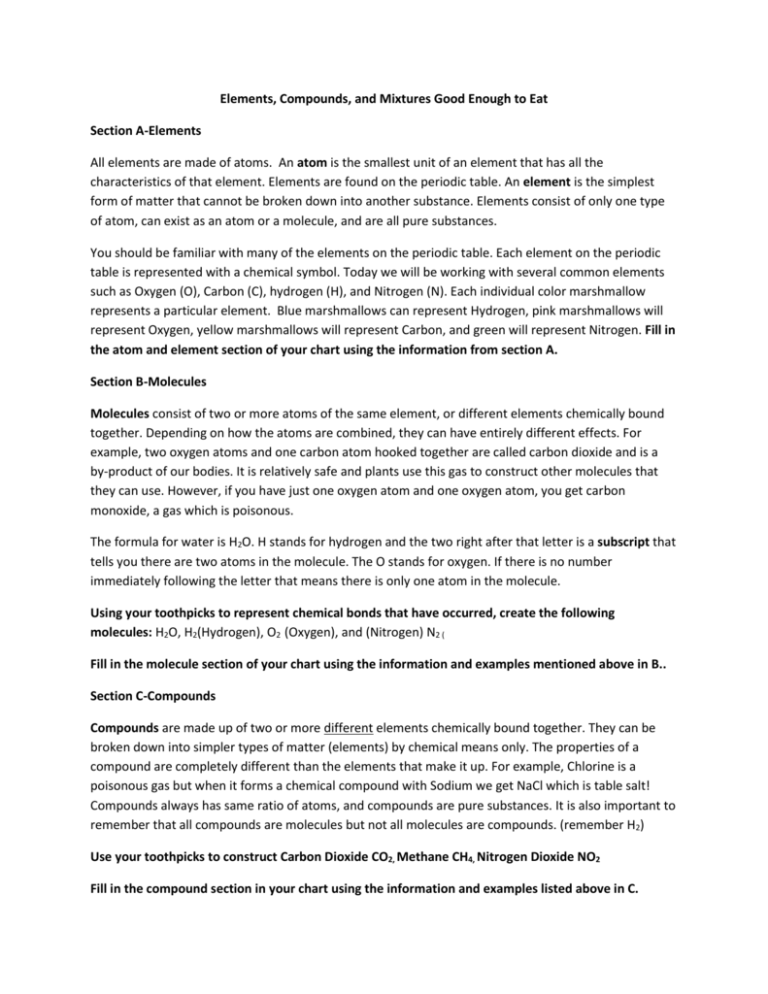
Elements, Compounds, and Mixtures Good Enough to Eat Section A-Elements All elements are made of atoms. An atom is the smallest unit of an element that has all the characteristics of that element. Elements are found on the periodic table. An element is the simplest form of matter that cannot be broken down into another substance. Elements consist of only one type of atom, can exist as an atom or a molecule, and are all pure substances. You should be familiar with many of the elements on the periodic table. Each element on the periodic table is represented with a chemical symbol. Today we will be working with several common elements such as Oxygen (O), Carbon (C), hydrogen (H), and Nitrogen (N). Each individual color marshmallow represents a particular element. Blue marshmallows can represent Hydrogen, pink marshmallows will represent Oxygen, yellow marshmallows will represent Carbon, and green will represent Nitrogen. Fill in the atom and element section of your chart using the information from section A. Section B-Molecules Molecules consist of two or more atoms of the same element, or different elements chemically bound together. Depending on how the atoms are combined, they can have entirely different effects. For example, two oxygen atoms and one carbon atom hooked together are called carbon dioxide and is a by-product of our bodies. It is relatively safe and plants use this gas to construct other molecules that they can use. However, if you have just one oxygen atom and one oxygen atom, you get carbon monoxide, a gas which is poisonous. The formula for water is H2O. H stands for hydrogen and the two right after that letter is a subscript that tells you there are two atoms in the molecule. The O stands for oxygen. If there is no number immediately following the letter that means there is only one atom in the molecule. Using your toothpicks to represent chemical bonds that have occurred, create the following molecules: H2O, H2(Hydrogen), O2 (Oxygen), and (Nitrogen) N2 ( Fill in the molecule section of your chart using the information and examples mentioned above in B.. Section C-Compounds Compounds are made up of two or more different elements chemically bound together. They can be broken down into simpler types of matter (elements) by chemical means only. The properties of a compound are completely different than the elements that make it up. For example, Chlorine is a poisonous gas but when it forms a chemical compound with Sodium we get NaCl which is table salt! Compounds always has same ratio of atoms, and compounds are pure substances. It is also important to remember that all compounds are molecules but not all molecules are compounds. (remember H2) Use your toothpicks to construct Carbon Dioxide CO2, Methane CH4, Nitrogen Dioxide NO2 Fill in the compound section in your chart using the information and examples listed above in C. Questions and Conclusions 1) Describe the difference between a molecule and an atom. 2) What is the difference in an element and a compound? What were the “elements” in this activity? How did you make them compounds? 3) Which is larger, an atom or a molecule? Explain. 4) What do the little numbers (subscripts) next to the letter in the formula for a molecule represent? Please give an example in your explanation used in the activity. 5) Agree or Disagree-All compounds are molecules but not all molecules are compounds. Make sure you justify or defend your stance on this with examples! Copy this chart in your science notebook for completion of today’s activity Term Atom Element Molecule Compound Definition/Characteristics Picture examples from activity
